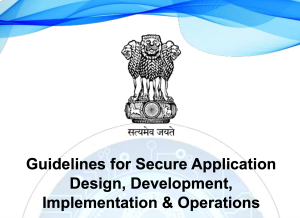
Social media platforms like Facebook, Twitter, Instagram, and LinkedIn have become integral parts of our lives, enabling us to stay connected with friends, family, and colleagues. However, these platforms also offer a fertile ground for cybercriminals looking to manipulate unsuspecting users. One increasingly common tactic used by these bad actors is social media account spoofing.
Account spoofing occurs when a scammer copies information from a legitimate social media account, such as the user’s name, location, and photos, to create a look-alike account. The spoofed account is then used to send connection requests to everyone on the original account’s friends or followers list. Often, these scammers will message connections with a plausible excuse, such as, “Sorry, I got hacked and had to create a new account!” to make their request seem more legitimate.

How to Spot a Spoofed Account
It’s natural to trust the people you’re connected with on social media. Unfortunately, cybercriminals exploit this trust to phish for sensitive information, spread malware, and even request money. Here are some key points to help you identify a spoofed account:
- Watch Out for Suspicious Links: Be cautious of any links sent through social media, especially if they seem off-topic, unusual, or too good to be true, such as gossip videos, dramatic news articles, or fabulous prizes.
- Request for Money: If someone is asking you for money, it’s likely a scam. If you feel the request might be legitimate, validate who you are speaking with and ask for proof of their claims.
- Double Check Connection Requests: If you receive a connection request or suspicious message from someone you are already connected with, proceed with caution. Before responding, try to contact the person through a different communication method like phone, text, or email to confirm the legitimacy of the request.
- Report Suspicious Accounts: If you suspect that an account is spoofed, alert the owner of the legitimate account immediately and report the suspicious account to the platform’s customer service department. Most social media platforms have reporting mechanisms in place to deal with spoofed accounts swiftly.

How to Prevent Your Account from Being Spoofed
Preventing your social media account from being spoofed is crucial not only for your security but also for protecting your friends, followers, and online reputation. Here’s how you can protect yourself:
- Keep Your Account Private: Setting your account to private won’t hide your information entirely, but it greatly reduces the likelihood of your account being spoofed. It restricts who can see your personal information and posts.
- Review Privacy Settings: Social media platforms offer various security and privacy settings that can easily be overlooked. Regularly review and update your privacy settings to ensure that your information is only visible to those you trust.
- Be Selective with Connection Requests: Only accept connection requests from people you know and trust. This helps maintain the integrity of your network and keeps your posts and information within a circle of trusted individuals.
- Act Quickly if You’re Spoofed: If you suspect that your account has been spoofed, contact the social media platform’s customer service department as soon as possible. They can help you regain control of your account and take down the spoofed account.

Conclusion
Social media account spoofing is a serious threat that can have far-reaching consequences if not handled properly. By staying vigilant and following the tips outlined above, you can protect yourself and your connections from falling victim to these malicious schemes. Remember, a cautious and proactive approach is your best defense against cybercriminals.
Tags: SocialMediaSafety, AccountSpoofing, CyberSecurity, PhishingPrevention, OnlinePrivacy, SecureYourAccount, DigitalSafety, SocialMediaSecurity, IdentityTheft, CyberAwareness





